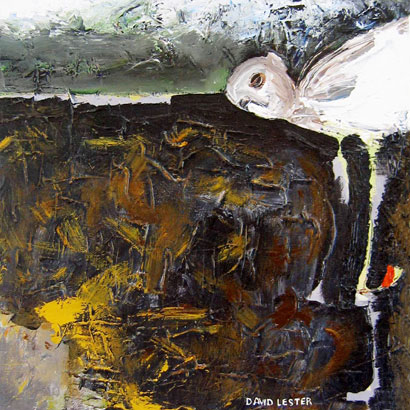 Every Saturday, we’ll be posting a new illustration by David Lester. The Mecca Normal guitarist is visually documenting people, places and events from his band’s 25-year run, with text by vocalist Jean Smith.
Every Saturday, we’ll be posting a new illustration by David Lester. The Mecca Normal guitarist is visually documenting people, places and events from his band’s 25-year run, with text by vocalist Jean Smith.
At the end of Jean-Luc Godard’s film In Praise Of Love, inside a car at night. Smeared windshield, rain, glare, city and traffic lights undulate through the murk and darkness. The guy driving says he’s going through a break-up. Some things—quelque choses—about the relationship are changing now, at the end. The woman says history is arriving: History with a capital “H.” I got an email this week from a guy who read a piece of my non-fiction in a new lit mag. He’d looked to see who I was, adding that listening to Mecca Normal was a time machine for him: taking him back to the past. I emailed back to say, “We didn’t stop making music. We aren’t from the past. We are in the present.” He didn’t reply. Perhaps he’d moved along to the future already. In 1987 we went to play with Beat Happening and the Screaming Trees in Bellingham, Wash., where we met Slim Moon for the first time. I thought he was retarded. Rich Jensen seemed to be his caregiver. We did an interview with Argon Steel for Maximum Rock ‘N Roll. Ten years ago (and about 10 years later), Argon moved to Honolulu to go deep into his Zen practice at a monastery in the mountains—he intended to stay seven months, but ended up staying three years as a temple keeper. Tall grass in a steep-sided, rainy valley. Solitude, silence, wearing black—Argon cut the grass. Argon is visiting Vancouver this week for a virology conference. David and I met him for coffee, and we talked for hours. Afterward, walking past a group of people in their 20s, I thought about expanses of memory at different ages and the profound endeavor of adding a new past to the more distant past—repeating this process, over and over, generating new versions of History. Histoire: the story. As Godard said, “A story should have a beginning, a middle, and an end—but not necessarily in that order.”






